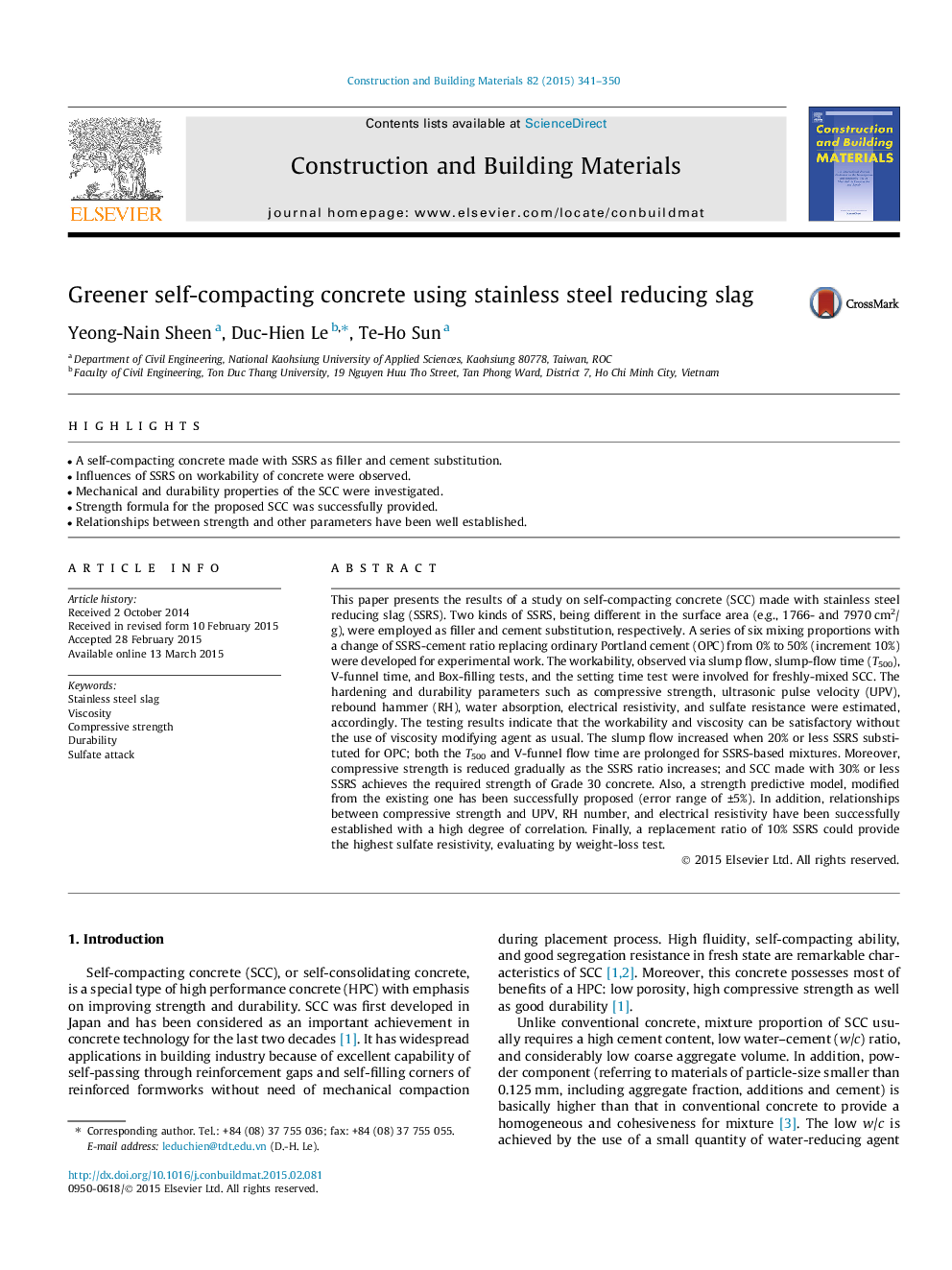| کد مقاله | کد نشریه | سال انتشار | مقاله انگلیسی | نسخه تمام متن |
|---|---|---|---|---|
| 256940 | 503567 | 2015 | 10 صفحه PDF | دانلود رایگان |
• A self-compacting concrete made with SSRS as filler and cement substitution.
• Influences of SSRS on workability of concrete were observed.
• Mechanical and durability properties of the SCC were investigated.
• Strength formula for the proposed SCC was successfully provided.
• Relationships between strength and other parameters have been well established.
This paper presents the results of a study on self-compacting concrete (SCC) made with stainless steel reducing slag (SSRS). Two kinds of SSRS, being different in the surface area (e.g., 1766- and 7970 cm2/g), were employed as filler and cement substitution, respectively. A series of six mixing proportions with a change of SSRS-cement ratio replacing ordinary Portland cement (OPC) from 0% to 50% (increment 10%) were developed for experimental work. The workability, observed via slump flow, slump-flow time (T500), V-funnel time, and Box-filling tests, and the setting time test were involved for freshly-mixed SCC. The hardening and durability parameters such as compressive strength, ultrasonic pulse velocity (UPV), rebound hammer (RH), water absorption, electrical resistivity, and sulfate resistance were estimated, accordingly. The testing results indicate that the workability and viscosity can be satisfactory without the use of viscosity modifying agent as usual. The slump flow increased when 20% or less SSRS substituted for OPC; both the T500 and V-funnel flow time are prolonged for SSRS-based mixtures. Moreover, compressive strength is reduced gradually as the SSRS ratio increases; and SCC made with 30% or less SSRS achieves the required strength of Grade 30 concrete. Also, a strength predictive model, modified from the existing one has been successfully proposed (error range of ±5%). In addition, relationships between compressive strength and UPV, RH number, and electrical resistivity have been successfully established with a high degree of correlation. Finally, a replacement ratio of 10% SSRS could provide the highest sulfate resistivity, evaluating by weight-loss test.
Journal: Construction and Building Materials - Volume 82, 1 May 2015, Pages 341–350
